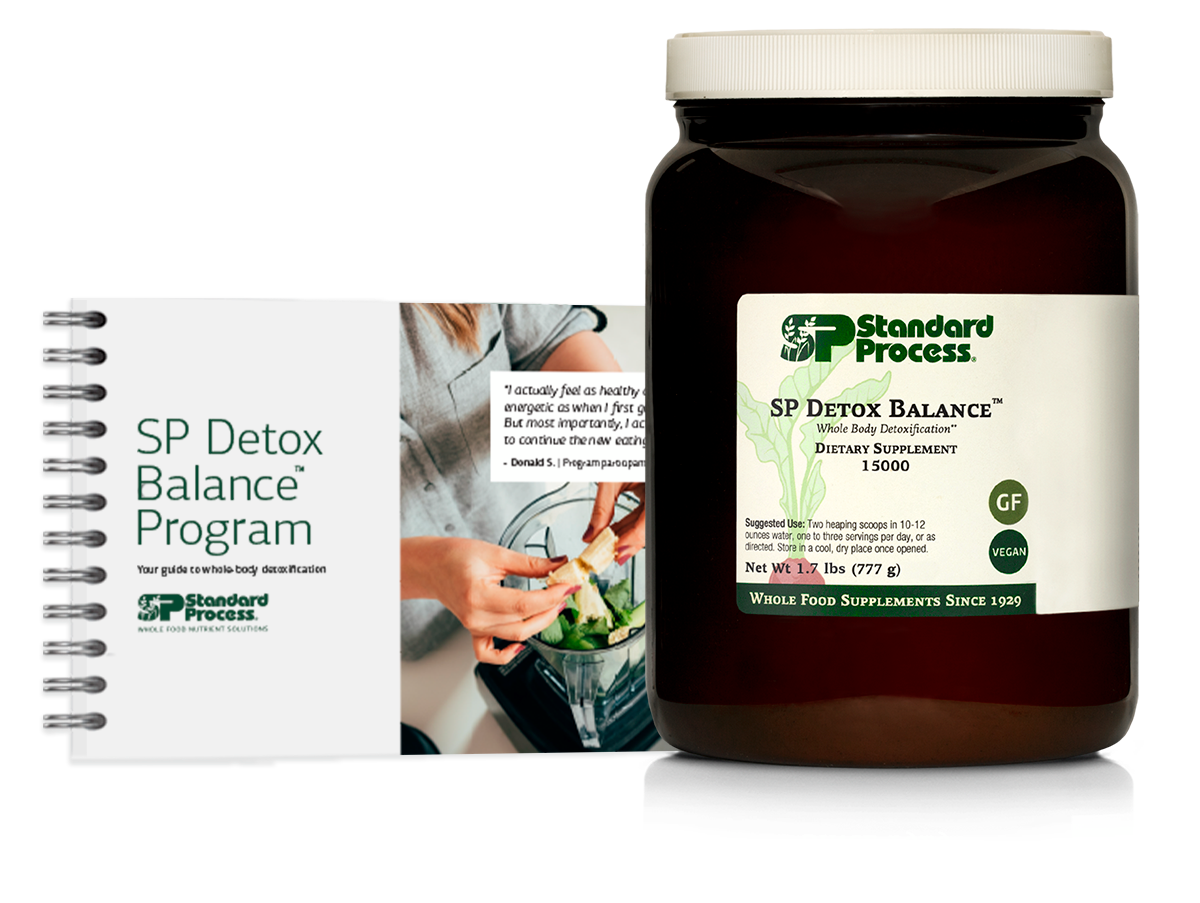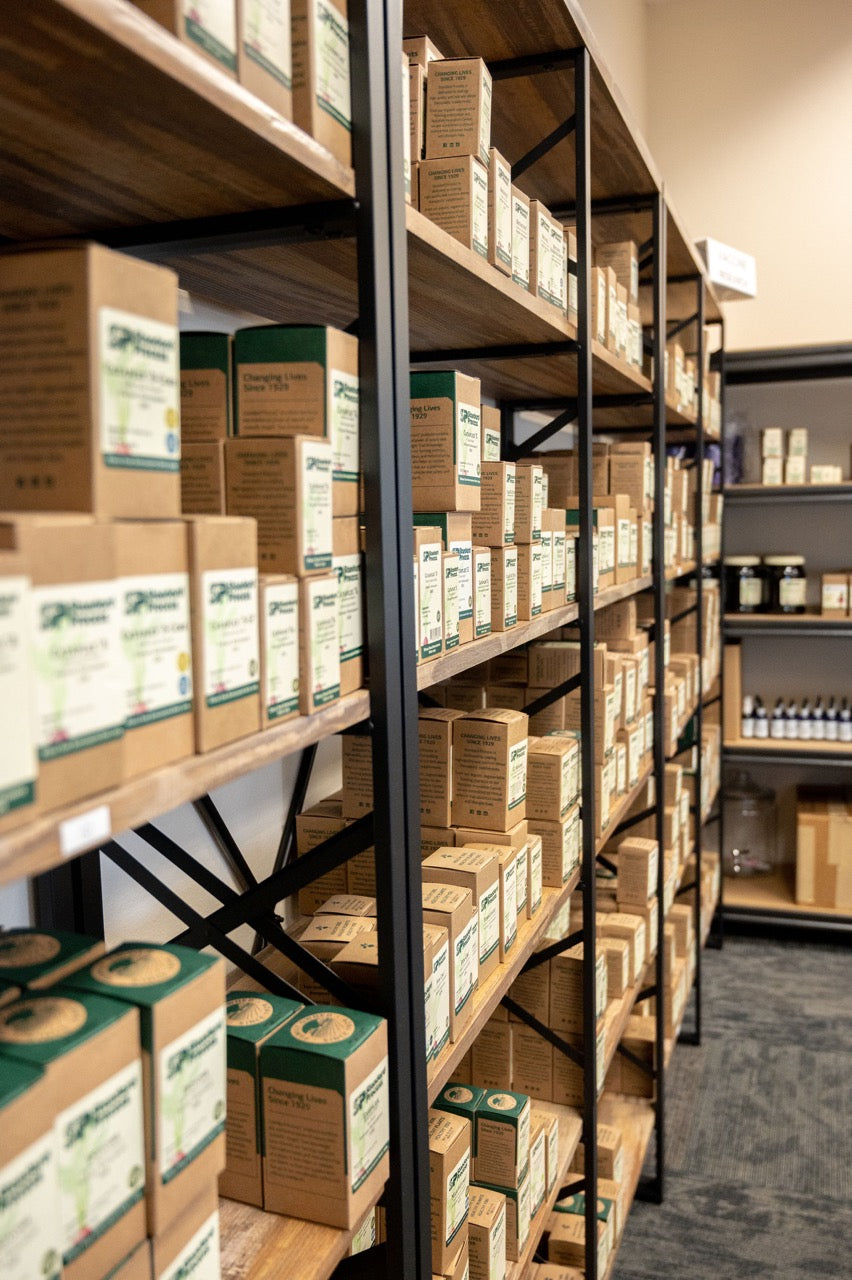Cultivating a Healthier Gut: The 'Weed, Seed, and Feed' Approach with MediHerb and Standard Process
Balance your gut microbiome with help from Standard Process and MediHerb


Restoring gut health often involves a process similar to tending a garden: weeding out harmful and overgrown bacteria, seeding with beneficial bacteria, and feeding beneficial fiber and prebiotics to help the microbiome flourish. This strategy, commonly known as the 'weed, seed, and feed' protocol, is particularly beneficial for addressing intestinal issues like irritable bowel. This approach promotes gut wellness by using dietary alterations and select supplements at specific intervals to bring the gut microbiota back to a state of health.

When Digestion Slumps, Bacteria Jumps: The Sneaky Pathway of SIBO
Small Intestine Bacterial Overgrowth (SIBO) is a condition triggered by several gut-related issues, including poor stomach acid production, insufficient stimulation of bitters, reduced amylase enzyme production for carbohydrate digestion, suboptimal intestinal motility, and impaired fat digestion due to low lipase and bile production.
In the absence of efficient digestion, bacteria take over, multiplying at a rapid rate and outcompeting beneficial bacteria. Under normal circumstances, the majority of bacteria are housed in the small intestine. However, in SIBO, these bacteria migrate to the large intestine, which is crucial for fat recirculation and nutrient reabsorption. Consequently, this bacterial relocation results in an array of complications, disrupting the gut's harmony and overall health.

Unraveling the Mystery of SIBO: More than Just a Gut Feeling!
According to a comprehensive study conducted by Grace, Zaya and Pimentel in 2023, titled "Clinical and Diagnostic Aspects of Small Intestinal Bacterial Overgrowth", an array of symptoms were associated with SIBO.
They noted, "Patients with SIBO commonly present with a wide range of non-specific symptoms. These symptoms often include frequent muscle and joint pain, persistent headaches, anxiety, insomnia, and constipation. Many of them also suffer from belching, intestinal bloating and pain, flatulence, nausea, and even report incidences of gallstones. Additionally, cases of Candidiasis and skin rashes were significantly higher among the SIBO population, suggesting a potential link between the condition and these symptoms."
Their study underlines the complexity and diversity of symptoms linked with SIBO, further reinforcing the need for individualized diagnosis and treatment.

1. Weeding Overgrown and Destructive Bacteria
The first step, weeding, aims to turn the gut into an unwelcoming environment for harmful bacteria. During this phase, one should abstain from consuming grains and sugars, as these foods provide sustenance for the harmful bacteria, helping them thrive. The incorporation of certain antibacterial herbs such as garlic, oregano, and goldenseal, can assist in this cleansing process.
To enhance this process, consider taking MediHerb's Gut Flora Complex. This unique blend contains essential oils of Anise (Aniseed) and Oregano, along with herbs Andrographis, Golden Seal and Phellodendron, which together help create an unfavorable environment for harmful bacteria while supporting overall gut health.
Enterically-coated capsules provide a significant advantage in herbal delivery. These special capsules are designed to resist dissolution in the acidic environment of the stomach.
The coating remains intact until it reaches the more alkaline environment of the intestines, where the capsule dissolves, releasing its contents.
This feature not only protects the stomach from potential irritation from the capsule's contents, but also ensures that sensitive ingredients, such as certain probiotics and enzymes, aren't destroyed by stomach acid.
Consequently, more of these beneficial ingredients reach the intestines, where they can exert their positive effects on gut health. This makes enterically-coated capsules a preferred choice for gut-targeted therapies, ensuring maximum effectiveness and optimal health benefits.

2. Seeding beneficial bacteria with probiotics
The second step, seeding, commences the restoration process in the gut. The aim here is to introduce probiotic-rich foods that act as 'seeds' for healthy gut bacteria. At this stage, probiotic foods like yogurt should become a part of your diet.
For a more potent approach, consider using Standard Process' Prosynbiotic. It is a targeted supplement designed to supply the gut with a variety of beneficial bacteria, thereby promoting a balanced microbiota.
Furthermore, to help the new, beneficial bacteria thrive, dietary fiber should be increased, as these 'good' bacteria feed off fiber that we, as humans, can't digest.
Also checkout the new GI Stability that you can use instead of Prosynbiotic that has some pretty amazing research behind it.

3. Feeding bacteria with prebiotics (and fiber)
Finally, nurturing or feeding is the ultimate step that fosters the gut while preserving the newly fostered beneficial bacteria. This phase should continue the diet rich in fiber, along with the addition of prebiotic foods like onions, asparagus, bananas, and garlic.
We recommend Standard Process Whole Food Fiber, a nutrient-dense source of soluble and insoluble fiber that beneficial bacteria feast on.
As these good bacteria consume the fiber, they produce short-chain fatty acids that nourish the gut lining, playing a crucial role in maintaining its integrity.
This phase also encourages the repair of the intestinal lining by incorporating foods rich in glutamine, such as chicken and fish.
Beginning the 'weed, seed, and feed' protocol may present initial challenges, especially with the need to eliminate dietary staples like grains and sugars.
However, under the guidance of a seasoned nutritionist and the use of carefully curated products like MediHerb's Gut Flora Complex, Standard Process' Prosynbiotic, and Standard Process Whole Food Fiber, the journey towards a healthier gut can be made both manageable and rewarding.

Gut Reboot in 20-Day Cycles: Your Step-by-Step Guide to Weed, Seed, and Feed Protocol!
The 'Weed, Seed, and Feed' Protocol is a strategic regimen for complete gut rejuvenation. To witness the optimal benefits, we recommend conducting three to four 20-day cycles.
Weeding: Commence each cycle with the 'weeding' phase. During the initial 10 days, take two capsules of MediHerb's Gut Flora Complex, twice daily. This procedure targets harmful bacteria, making the gut environment unfavorable for their survival.
For additional antimicrobial action, consider supplementing this phase with MediHerb's Cat's Claw Complex.
Seeding: After weeding, transition into the 'seeding' phase for the following 10 days. Here, you should consume Standard Process' Prosynbiotic, two capsules twice a day. The objective is to re-introduce beneficial bacteria into your gut and initiate the healing process.
We also recommend GI Stability that can replace Prosynbiotic. It is a newer product that has been getting a lot of praise at conferences.
Feeding: Parallel to the seeding phase, start the 'feeding' stage. This involves taking one tablespoon of Standard Process' Whole Food Fiber, twice a day. This fiber supplement can be conveniently mixed into your smoothie, water, or juice, and serves to nourish the newly introduced beneficial bacteria, encouraging their growth and sustainability.
If you're looking for additional support for biofilms, consider adding MediHerb's Vitanox to this phase.
While the journey to optimal gut health might seem challenging initially, remember that slow and steady wins the race. With consistent adherence to this regimen, achieving a balanced gut ecosystem is entirely achievable!

The 'No-Wipe Poop' and Other Gut Triumphs: Celebrating Wins on the Path to Digestive Bliss
As you embark on the transformative 'Weed, Seed, and Feed' protocol, you can anticipate various changes in your bodily functions, many of which are indicative of your improving gut health. One of the most noteworthy is what's affectionately known as the 'magical no-wipe poop'.
This type of bowel movement is a sign of optimal digestion and stool formation. It's the gold standard of gut health and symbolizes the perfect balance of hydration, fiber, and beneficial bacteria in your digestive tract.
Beyond this magical moment, you may also experience a decrease in bloating, gassiness, and abdominal discomfort as the balance of bacteria in your gut is restored. These changes signal the lessening of intestinal inflammation, leading to better nutrient absorption, increased energy levels, and enhanced overall well-being.
Further, with the reduction of harmful bacteria, symptoms such as joint pain, headaches, anxiety, and skin rashes may gradually diminish, offering a testament to the intricate connection between the gut and other bodily systems.
While the journey towards improved gut health is a gradual process, these encouraging signs can be a powerful motivator to stay the course. You're not just enhancing your gut health, but you're reclaiming your life, one 'magical no-wipe poop' at a time.
Helpful links and references
1. Bone, K. (2007). Phytotherapy Review & Commentary: Andrographis: An overview. Townsend Letter for Doctors and Patients, (293), 80-85.
2. Plaza-Díaz, J., Ruiz-Ojeda, F. J., Vilchez-Padial, L. M., & Gil, A. (2017). Evidence of the Anti-Inflammatory Effects of Probiotics and Synbiotics in Intestinal Chronic Diseases. Nutrients, 9(6), 555.
3. Gibson, G. R., Beatty, E. R., Wang, X., & Cummings, J. H. (1995). Selective stimulation of bifidobacteria in the human colon by oligofructose and inulin. Gastroenterology, 108(4), 975-982.
4. Lazaroff, M. (2004). The Complete Idiot's Guide to Anatomy & Physiology.
5. Guarner, F. (2006). Digestion, 73(Suppl 1), 5-12.
6. Losada, M. A., & Olleros, T. (2002). Nutr Res, 22(1-2), 71-84.
7. Force, M., Sparks, W. S., & Ronzio, R. A. (2000). Phytother Res, 14(3), 213-214.
8. Oswald, E. H. (1993/94). Br J Phytother, 3, 112.
9. Kenner, D., & Requena, Y. (1996). Botanical Medicine: A European Professional Perspective.
10. Wu, H. Z., Fang, Y., & Lui, Y. W. (2002). Chin J Info Tradit Chin Med, 9(1), 40-41.





